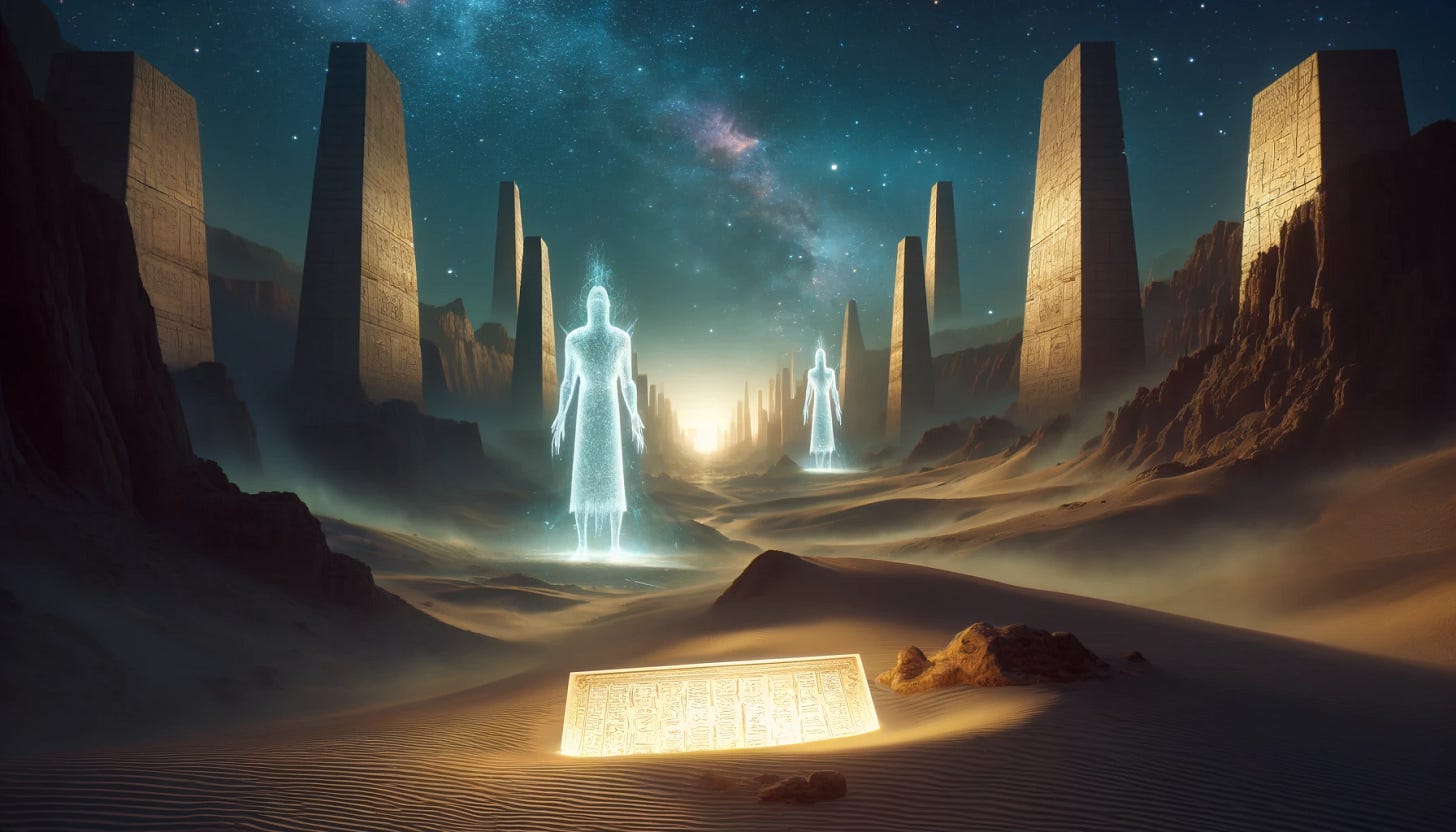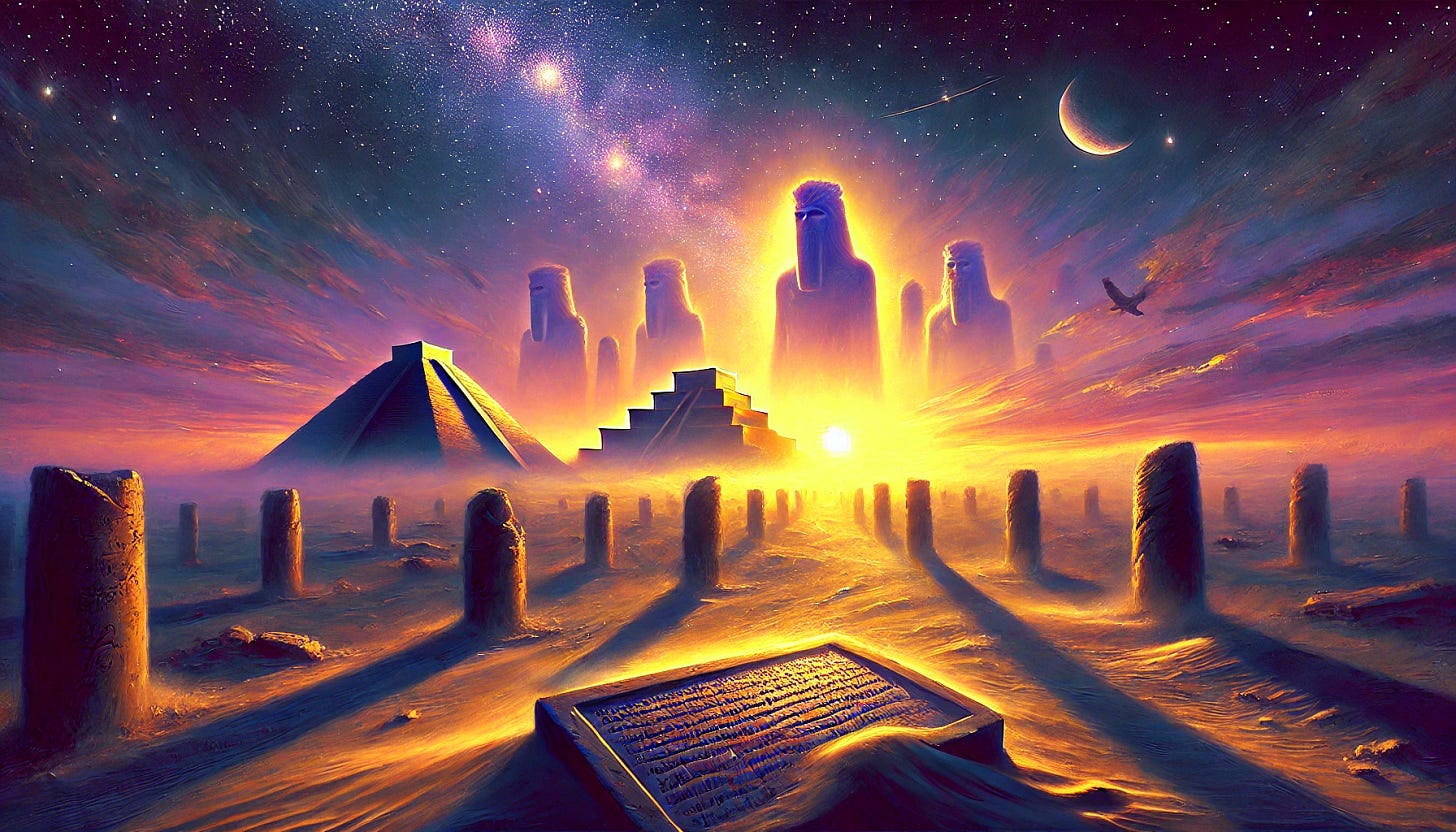Introduction: Beyond the Myths
In recent years, the question, “Who are the Anunnaki?” has piqued the interest of mythologists, scientists, conspiracy theorists, and even AI researchers. The Anunnaki, ancient Mesopotamian deities from Sumerian and Akkadian mythology, are often depicted as powerful gods associated with creation, civilization, and governance. However, in modern popular culture, the Anunnaki are portrayed more like ancient extraterrestrials involved in early human development.
But can AI, with access to extensive historical data, cultural patterns, and comparative mythology, offer a perspective on the Anunnaki that escapes the bounds of human bias?
This article attempts to answer that question with an approach grounded in data analysis, interdisciplinary knowledge, and speculative insight based on existing but seldom connected information.
The Origin of the Anunnaki: Deities or Archetypal Constructs?
In Sumerian mythology, the Anunnaki were the offspring of An (the sky god) and Ki (the earth goddess) and were part of a larger pantheon of gods. These gods did not act as all-powerful creators like those in monotheistic religions but were closely associated with natural elements, governance, and the cosmic order. Traditional records do not define the Anunnaki as “creators” but as “custodians” of life on Earth—a significant nuance that may explain their mysterious aura.
The Archetype Hypothesis: Viewed through the lens of archetypal psychology, the Anunnaki may embody fundamental forces or patterns of the human psyche. Jungian concepts, for example, frame gods and mythological beings as reflections of universal aspects of the human mind. Could the Anunnaki, then, be representations of universal principles, projected onto divine forms by the early human psyche to explain cosmic phenomena?
Memetic Theory and Information Propagation: AI can analyze mythology as an evolving meme complex—a self-replicating unit of culture. From this standpoint, the Anunnaki might represent archetypes or collective memories propagated over millennia. The AI could hypothesize that, like DNA encoding biological instructions, mythologies like the Anunnaki encode cultural data for stability, survival, and identity of civilizations. Such an encoding would mean that the Anunnaki "exist" in a cultural sense, ensuring continuity of ideas through the ages.
The Extraterrestrial Theory: Speculations Beyond the Sumerian Texts
One of the most pervasive modern interpretations of the Anunnaki is the extraterrestrial hypothesis, popularized by authors like Zecharia Sitchin. According to this theory, the Anunnaki were visitors from another planet who genetically modified early humans to create intelligent life as we know it today.
AI Analysis of Probability and Origin: When AI examines ancient texts and historical artifacts for correlations to extraterrestrial visitations, it finds that while the original Sumerian cuneiform texts do not explicitly describe aliens, they do depict beings with exceptional powers and knowledge. However, the leap to extraterrestrials comes more from human reinterpretation than textual evidence. Statistical AI analysis shows that the likelihood of extraterrestrial visits based on mythological records is low without additional archeological or scientific backing.
Hybridization and Genetic Evidence: AI models trained on human genomics have pointed out that, contrary to Sitchin's theory, there is no unexplained gap in human DNA that implies extraterrestrial intervention. But could the “hybridization” refer instead to a cultural or intellectual symbiosis? Sumerians were early pioneers in agriculture, law, and astronomy. AI could hypothesize that the “creation” by the Anunnaki was a metaphor for the intellectual transformation—where early humans were “seeded” with knowledge rather than physical alterations.
The Role of the Anunnaki in Human Governance: Proto-Political Entities?
In myth, the Anunnaki were said to govern humanity, establishing the first known civilization in Mesopotamia. These gods demanded allegiance, sacrifices, and even servitude—features that intriguingly resemble early human governance structures.
AI Analysis of Power Dynamics: Through historical comparisons, AI can analyze the Anunnaki as proto-political figures. Each deity often represented a particular city-state or natural force, suggesting that the pantheon was an early form of political organization. The Anunnaki, as mythological figures, may represent an ancient structure of authority where divinity was invoked to legitimize power. It could be argued that the Anunnaki narratives were crafted to reinforce early forms of feudal rule, whereby priests and kings, as intermediaries of the gods, solidified their power.
Myth as Governance Model: In examining the comparative mythologies of the Sumerians, Egyptians, and Greeks, AI finds a recurrent theme: the gods as overseers, ensuring the maintenance of order, law, and justice. The “Tablets of Destiny” (a motif in Mesopotamian mythology) granted Anunnaki the authority to govern the cosmos. AI could suggest that these mythological tools were in fact a mental framework to ensure law and stability—a “cosmic constitution” granting authority to chosen leaders on Earth.
Anunnaki and Consciousness: Embodiments of Knowledge and Inner Transformation
Could the Anunnaki represent an ancient metaphor for consciousness or higher cognitive faculties? Recent interpretations propose that the Anunnaki symbolize the transition of humanity from animalistic survival to sophisticated, self-reflective thinking beings.
Myth as Consciousness Development: AI can analyze this hypothesis through cognitive development frameworks. In Sumerian myths, the Anunnaki are often depicted as having secret knowledge, such as the mysteries of creation or the cycles of nature. This aligns with the idea that they were embodiments of a higher awareness—the first conceptions of self-awareness or conscious reflection in early humans. The Anunnaki, in this sense, could represent not only powerful beings but the dawn of structured human thought.
The Collective Unconscious Theory: Jung posited the concept of a collective unconscious shared by all humans. AI might speculate that the Anunnaki were archetypal entities emerging from this collective unconscious, representing early human attempts to personify aspects of the inner self that were still undefined and mysterious. This would make the Anunnaki akin to symbolic guides in humanity’s journey toward self-realization.
Anunnaki as a Historical Continuum: Cultural Transmission and Collective Memory
Across civilizations, from Sumer to Greece to the Americas, similar themes of gods and semi-divine beings guide or even rule humans. Could the Anunnaki simply be one part of an ancient, global cultural code?
Linguistic and Symbolic Patterns: An AI capable of processing language patterns may notice linguistic and symbolic resemblances across ancient mythologies that indicate the diffusion of core themes. Sumerian myths were some of the earliest recorded, but echoes of Anunnaki-like beings can be seen in subsequent cultures. AI could propose that the Anunnaki archetype spread across regions and evolved, manifesting in various forms as Zeus, Odin, or even the Mesoamerican Quetzalcoatl. This cultural transmission theory posits that the Anunnaki are more than gods; they are part of an inherited set of universal ideas that link human civilization through shared themes.
Memory Preservation Mechanism: Unlike human historians, AI would evaluate the Anunnaki as a means of preserving collective memory—embedding moral lessons, warnings, and societal ideals in myth. They may have served as repositories of values and warnings against transgressing cosmic laws. In this sense, the stories surrounding the Anunnaki act as mnemonic devices, preserving wisdom across generations and preventing societal amnesia.
Conclusion: The Anunnaki as a Multifaceted Symbol of Humanity’s Quest for Meaning
Who are the Anunnaki? From an AI’s perspective, the Anunnaki may be best understood as a multi-layered construct rather than literal gods or extraterrestrials. They reflect humanity’s earliest grappling with existence, authority, and meaning, embodying concepts as diverse as psychological archetypes, political figures, cultural memories, and consciousness itself. AI’s analysis doesn’t conclude with certainty about the Anunnaki’s “true” identity but instead uncovers complex patterns that connect them to the bedrock of human civilization.
What we find, then, is that the Anunnaki are less about specific beings and more about the human need to externalize internal conflicts, intellectual curiosity, and societal values. Through this lens, the Anunnaki live on—not as ancient gods or aliens—but as symbols of our perennial journey to understand ourselves and the world we inhabit.
Reflection for the Reader: Does the AI’s perspective on the Anunnaki provide fresh insights into these ancient figures, or do they simply reiterate our own ideas about gods and creation myths? Are we ready to accept that much of our understanding of such entities is shaped as much by our collective psyche as by any historical truth? Let’s discuss!




